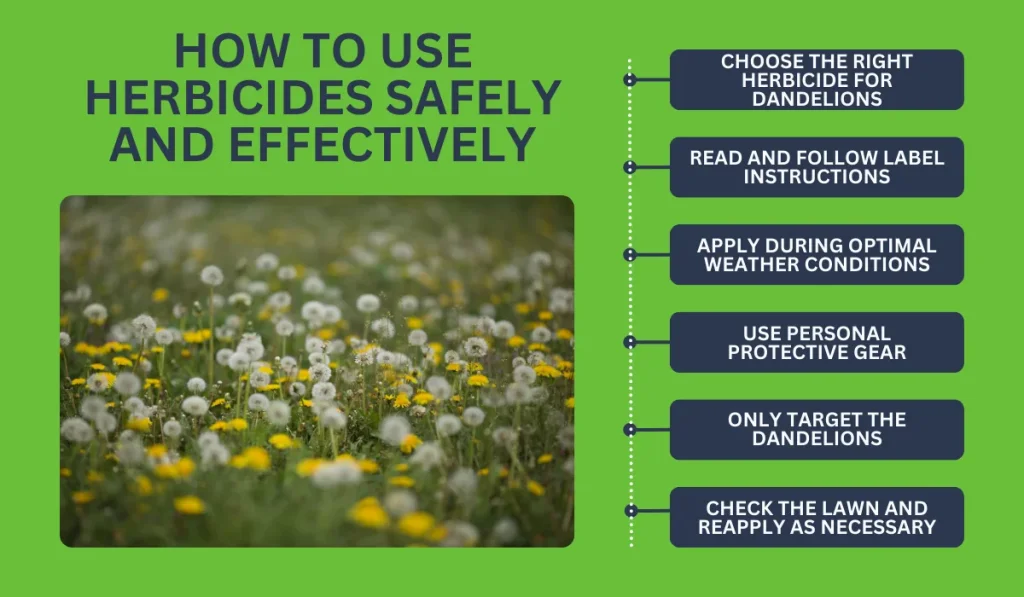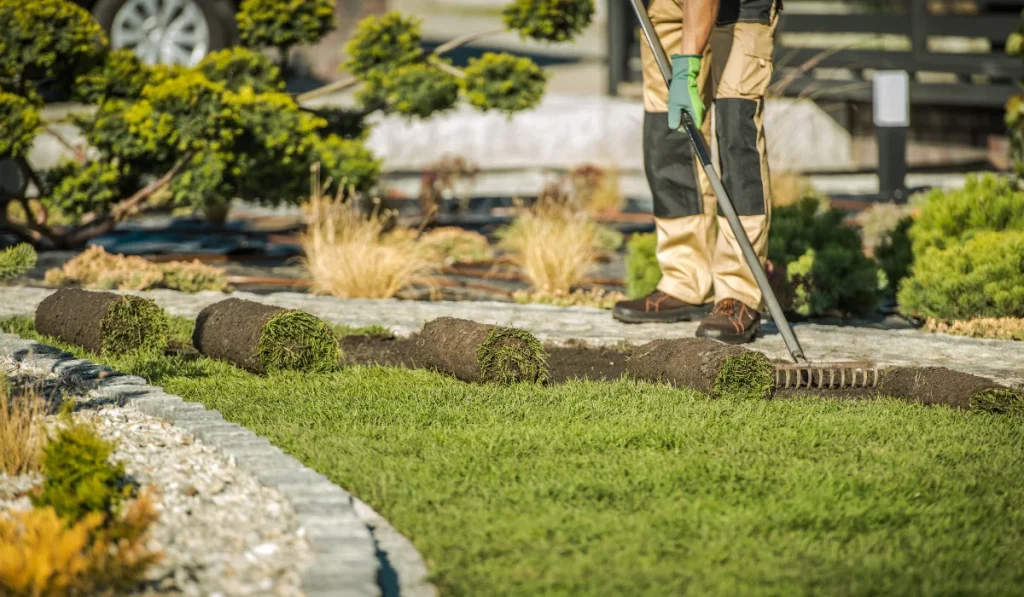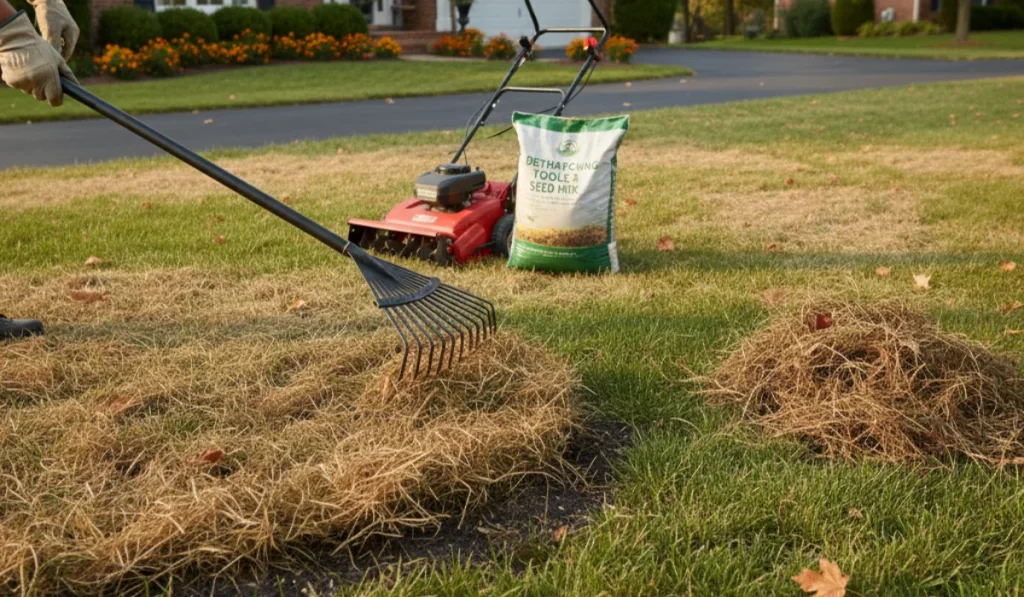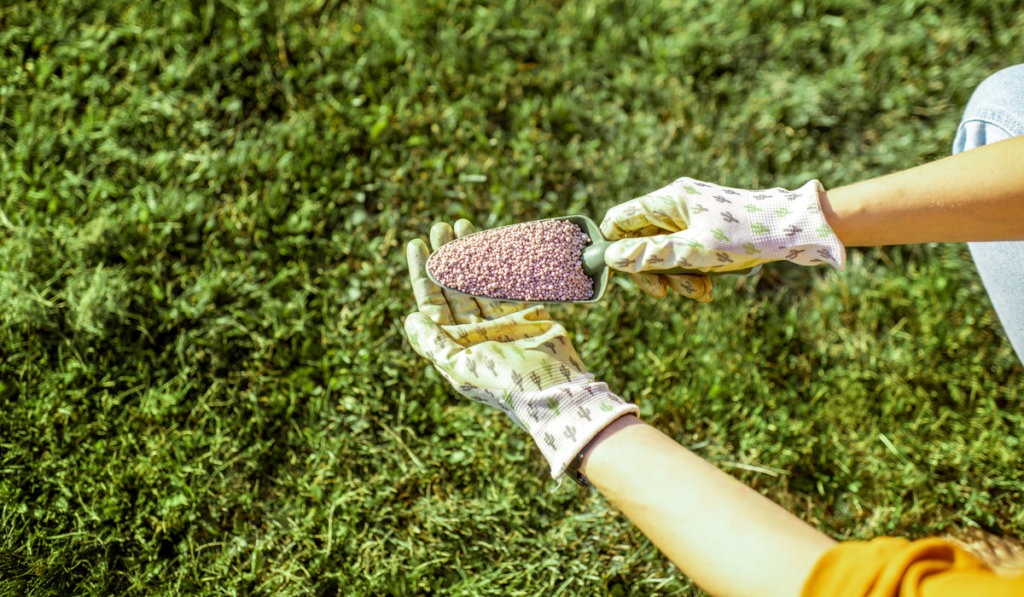Every gardener knows the frustration of finding dandelions invading their perfectly manicured lawn. These persistent weeds not only spoil the uniform look of the grass but also compete for nutrients and water.
Want to know effective ways to get rid of dandelions and prevent them from coming back next year? Keep reading and learn proven methods and tips to keep your lawn healthy and dandelion-free.
Key Takeaways
- Selective herbicides can kill dandelions without harming your lawn but might affect bees.
- Natural methods, such as pulling weeds manually, can offer chemical-free ways to get rid of dandelions.
- Hand-pulling is a thorough way to remove dandelions, though it requires some effort.
- Proper lawn care, like regular feeding, deep watering, using pre-emergent herbicide in the spring, and overseeding, can help prevent dandelions.
How to Use Herbicides Safely and Effectively

Selective herbicides are popular weed killers without harming your turfgrass. These products target broadleaf weeds like dandelions. Applying them carefully is important to lessen any potential impact on pollinators.
Step 1: Choose the Right Herbicide for Dandelions
Selecting the correct herbicide is crucial for targeting dandelions. Broadleaf herbicides work well because dandelions are broadleaf weeds. Products containing ingredients like 2,4-D, dicamba, or MCPP are known to be effective.
Be sure to choose an herbicide that is labeled for use on your lawn’s turf.
Step 2: Read and Follow Label Instructions
Before applying any herbicide, thoroughly read the label instructions. These directions provide essential details about safe usage and effective application methods.
Pay close attention to dosage recommendations, as over-application can damage your lawn.
Step 3: Apply During Optimal Weather Conditions
Optimal days to apply herbicides are usually sunny. You can think of mild temperatures between 60°F and 80°F.
Since wind can cause drift that may affect nearby plants, avoid windy days. Rain can also wash away the herbicide before it takes effect. Apply in the early morning or late afternoon when the winds are calmer.
Step 4: Use Personal Protective Gear
Safety should be a top priority when using herbicides. Always wear protective gear such as gloves, long sleeves, pants, and eye protection. Wearing a face mask can also reduce the risk of inhaling fumes.
Never mix herbicides with bare hands, and always wash after use.
Step 5: Only Target the Dandelions
To avoid unnecessary damage to healthy parts of the lawn, apply herbicides to affected areas only.
Spot treatment is recommended for minimal disruption. Use a spray bottle to control the application more precisely. Focus on the dandelions and their taproots. This ensures that the product reaches the dandelion root.
Step 6: Check the Lawn and Reapply as Necessary
After initial application, check your lawn to assess the effectiveness of the herbicide. Dandelion plants are stubborn perennial weeds that might need repeated treatments. Check for regrowth and apply more treatments if needed.
Chemical-Free Options
Boiling Water Technique
The boiling water technique is a chemical-free method that can kill dandelions on contact. But, it may not always reach or completely kill the deep taproot, which could lead to regrowth. This method is especially useful for isolated dandelion infestations.
Hand-Pulling
Hand-pulling is a straightforward but labor-intensive method to remove dandelions from your lawn. It involves using tools like a dandelion puller, weeder, or garden fork to uproot the entire plant.
After removing the weeds, fill the holes with mulch to suppress growth and improve moisture retention.
How to Prevent Dandelion Growth in Your Lawn
Maintain a Healthy Lawn Through Regular Fertilization
Choosing the right fertilizer is important to maintain a lush, puffball-free lawn. Look for a balanced mix of nitrogen, phosphorus, and potassium.
Apply fertilizer in early spring so your lawn has a head start against dandelions. Follow the guide to avoid over-fertilization, which can lead to excessive growth.
Set the Right Mowing Height to Discourage Dandelions
Mowing height can impact the presence of bright yellow flowers in your garden. Setting your lawn mower to cut at a height of around 2.5 to 3.5 inches helps shade the soil. This makes it harder for dandelion seed heads to germinate and sprout.
Water Your Lawn Deeply but Infrequently
Watering practices also influence dandelion infestation. Deep but infrequent watering encourages a deeper root system in the grass. This practice can make your lawn more resilient to new plant invaders and lawn diseases.



